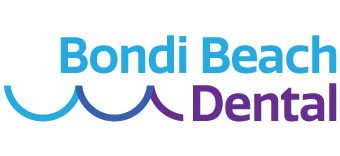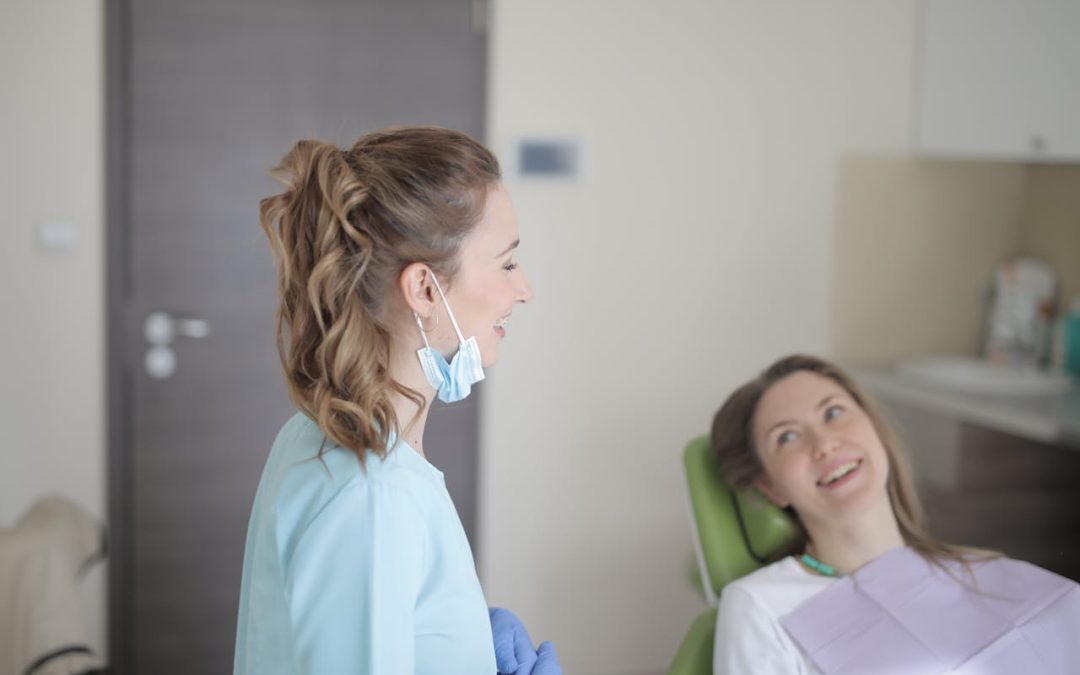It’s easy to get confused about who does what in a dental clinic. You might wonder about the roles of a dental hygienist and a dental therapist, especially when compared to your dentist. Understanding their distinct responsibilities can help you know who to see for different aspects of your oral care. Let’s break down these important dental professionals.
Key Takeaways
- A dental hygienist primarily focuses on preventing gum disease and maintaining your oral health through cleaning and education.
- Dental therapists can perform some procedures like fillings and extracting baby teeth, tasks often associated with dentists.
- While hygienists concentrate on preventative care and gum health, therapists have a broader scope, including restorative work on baby teeth and some procedures on adult teeth.
- Both roles are vital to a dental team, working alongside dentists to provide comprehensive patient care.
- Not all dental practices have both a hygienist and a therapist, but their services are increasingly common and important for good oral hygiene.
Understanding the Roles in Dental Care
When you visit a dental practice, you’ll encounter a team of professionals, each with distinct skills and responsibilities aimed at maintaining your oral health. It’s helpful to know who does what, so you can better understand the care you receive.
Think of your dental team as a coordinated unit. While the dentist leads the overall treatment plan, other professionals play vital roles in prevention, treatment, and patient education. Understanding these roles can demystify your dental visits and help you appreciate the comprehensive care available.
- The Dental Hygienist: Primarily focuses on preventive care and maintaining gum health.
- The Dental Therapist: Often handles more restorative procedures and can provide emergency care in some situations.
- The Dentist: Oversees all aspects of oral health, diagnosing conditions and developing treatment strategies.
Each member contributes uniquely to your journey towards a healthy smile. Knowing their specific contributions can make your appointments more informative and less daunting.
The Dental Hygienist: Focus on Prevention and Oral Health
Key Responsibilities of a Dental Hygienist
When you visit our practice, you’ll likely meet the dental hygienist first. Their primary role is to help you maintain excellent dental hygiene and prevent dental diseases. Think of them as your partners in keeping your smile healthy between check-ups. They are specially trained to focus on the prevention of gum disease and tooth decay. A significant part of their work involves professionally cleaning your teeth. This process, often called a ‘scale and polish’, removes plaque and tartar – those hardened deposits that regular brushing at home can’t quite get rid of.
Beyond the cleaning itself, hygienists are experts at showing you the most effective ways to clean your teeth and gums at home. They’ll demonstrate proper brushing techniques and the use of interdental aids like floss or special brushes to clean between your teeth. They can also advise on specific oral care products, such as toothpastes or mouthwashes, that might be particularly beneficial for your needs. If you have dental implants or orthodontic appliances, they can provide tailored advice for keeping these clean.
The hygienist’s guidance on home care is just as important as the professional cleaning they provide. It’s a collaborative effort to keep your mouth in top condition.
Education and Training for Dental Hygienists
Dental hygienists undergo specific education and training to equip them with the skills needed for their role. This training focuses heavily on preventive dental care and the management of gum disease. They learn to identify early signs of oral health issues and provide treatments aimed at stopping them from progressing.
Their scope of practice can include:
- Professional cleaning: Removing plaque and tartar build-up.
- Oral hygiene instruction: Demonstrating effective brushing and flossing techniques.
- Dietary advice: Discussing how food and drink choices impact oral health.
- Preventive treatments: Applying fluoride varnishes or sealants to protect teeth.
- Taking dental X-rays: Assisting the dentist in diagnosis.
- Tooth whitening: Performing whitening procedures under a dentist’s prescription.
While some practices may not have a hygienist on staff, their availability is increasing. If your practice doesn’t have one, your dentist might refer you, or you can often contact a hygienist directly. They are a vital part of the dental team, dedicated to helping you achieve and maintain a healthy mouth.
The Dental Therapist: Bridging the Gap in Care
What Dental Therapists Can Do
Dental therapists are a vital part of the modern dental team, often performing a range of procedures that were once exclusively handled by dentists. They are trained to provide direct patient care, focusing on restorative treatments and certain types of extractions, particularly for children. Think of them as extending the reach of dental care, making it more accessible.
Their scope includes:
- Performing routine fillings and restoring teeth that don’t require nerve treatment.
- Placing pre-formed crowns on baby teeth.
- Extracting primary (baby) teeth.
- Administering local anaesthetics and nitrous oxide for patient comfort during procedures.
- Providing emergency care for issues like painful abscesses or cracked teeth, which might involve prescribing antibiotics or placing temporary fillings.
Training and Scope of Practice for Dental Therapists
The training for a dental therapist is rigorous, building upon foundational dental knowledge. They typically complete a specific degree or diploma program focused on therapeutic dental care. This specialised education allows them to work under the general supervision of a dentist, but with a significant degree of autonomy in performing their duties.
It’s important to note that the exact responsibilities and the extent of their practice can vary depending on state or territory regulations. However, their core function is to support dentists by managing a broader range of clinical tasks, thereby improving patient access to timely and effective dental treatment. They are skilled in preparing cavities, placing temporary fillings, and polishing teeth, contributing significantly to the overall efficiency and quality of care provided in a dental practice.
The Dentist: The Leader of the Dental Team
As your local dentist in Bondi, I often get asked about the different roles within a dental practice. While hygienists and therapists play vital roles in maintaining your oral health, the dentist is ultimately responsible for the overall diagnosis, treatment planning, and complex procedures. Think of us as the conductors of your dental orchestra, ensuring every instrument plays its part harmoniously for your best outcome.
Dentist’s Role in Diagnosis and Treatment Planning
My primary role involves a thorough examination of your entire mouth, not just your teeth. This includes checking your gums, tongue, cheeks, and jaw. We look for any signs of decay, gum disease, oral cancer, and other conditions that might not be immediately obvious. Based on this comprehensive assessment, which often includes X-rays, I develop a personalised treatment plan tailored to your specific needs. This plan outlines the recommended procedures, their purpose, and expected outcomes. It’s a collaborative process; we discuss the options together, ensuring you understand every step and feel comfortable with the proposed course of action.
Education and Specialisation for Dentists
Becoming a dentist requires a significant commitment to education. After completing a bachelor’s degree, typically in a science-related field, one must undertake a dental degree (like a Bachelor of Dental Surgery or Bachelor of Dental Science). This is followed by rigorous practical training. Many dentists, myself included, pursue further specialisation in areas such as orthodontics (straightening teeth), periodontics (gum health), endodontics (root canals), or oral surgery. This ongoing education ensures we stay at the forefront of dental advancements and can provide the most effective and up-to-date care for you.
Here’s a general overview of the dentist’s responsibilities:
- Diagnosis: Identifying oral health issues through examination and diagnostic tools.
- Treatment Planning: Creating personalised strategies to address diagnosed conditions.
- Performing Procedures: Carrying out complex treatments like fillings, crowns, root canals, extractions, and cosmetic procedures.
- Prescribing Medication: Authorising necessary medications, such as antibiotics or pain relief.
- Overseeing the Dental Team: Guiding and collaborating with hygienists, therapists, and dental assistants.
It’s important to remember that while hygienists and therapists are highly skilled and can perform many important tasks, the dentist holds the ultimate responsibility for your oral health diagnosis and the overall treatment strategy. We are here to ensure your care is safe, effective, and meets the highest standards.

Key Differences Summarised
When you visit a dental practice, you’ll encounter a range of skilled professionals, each with distinct roles in maintaining your oral health. Understanding these differences helps you know who to see for specific needs.
- Dental Hygienist: Primarily focused on preventative care and managing gum health. They are your go-to for professional cleaning (scaling and polishing), removing plaque and tartar, and providing personalised advice on home care techniques. Hygienists also administer fluoride treatments, place fissure sealants, and can take dental X-rays. They play a vital role in educating you about diet and preventing decay, often working to get your gums healthy before a dentist performs restorative work.
- Dental Therapist: Possesses a broader scope of practice, often combining the duties of a hygienist with certain restorative procedures. Therapists can perform fillings, extract primary (baby) teeth, and place preformed crowns on baby teeth. They can also restore adult teeth, provided the treatment doesn’t involve the tooth’s nerve. While they handle many tasks previously exclusive to dentists, they typically do not perform crowns on adult teeth.
- Dentist: The leader of the dental team, responsible for diagnosing oral conditions, developing comprehensive treatment plans, and performing complex procedures. Dentists oversee the overall care of your oral health, including performing intricate restorative work, root canals, extractions of permanent teeth, and fitting crowns and bridges. They also manage more complex cases and may specialise further in areas like orthodontics or oral surgery.
Think of it this way:
- Hygienist: Your partner in prevention and gum health.
- Therapist: Extends preventative care to include basic restorative treatments, especially for children.
- Dentist: The primary diagnostician and manager of complex dental needs.
While their responsibilities can overlap and vary slightly depending on local regulations and individual practice structures, this general overview should clarify their distinct contributions to your dental well-being.
When to See Which Professional
Deciding who to see for your dental needs can sometimes feel a bit confusing, but it’s actually quite straightforward once you understand the primary focus of each role. Think of it as a team approach to keeping your mouth healthy.
Your routine check up for teeth are the foundation of good oral health. These appointments are typically with your dentist, who oversees your overall dental health. They are the ones who diagnose issues, create treatment plans, and perform more complex procedures like fillings, extractions, or root canals. If you’re experiencing tooth pain, have a broken tooth, or notice any changes in your mouth, your dentist is your first point of contact.
Your dental hygienist is your partner in prevention. They are experts at cleaning your teeth, removing plaque and tartar buildup that you can’t reach at home, and checking for early signs of gum disease. They’ll also provide personalised advice on brushing, flossing, and diet to help you maintain a healthy mouth between visits. If you’re due for a clean, or want to improve your home care routine, book in with your hygienist.
Dental therapists often work with specific patient groups, like children, or provide a range of restorative treatments under the supervision of a dentist. They can perform tasks like placing fillings or cleaning teeth, effectively bridging the gap in care. If you have children who need routine check-ups and cleaning, or if you’ve been referred for specific restorative work, a dental therapist might be involved.
Here’s a simple guide:
For a general check-up, diagnosis of a problem, or complex treatment (like fillings, crowns, extractions): See your Dentist.
For a professional clean, plaque and tartar removal, gum health checks, and advice on home care: See your Dental Hygienist.
For routine care, especially for children, or specific restorative treatments under supervision: A Dental Therapist may be involved.
It’s important to remember that these roles often collaborate. Your dentist might recommend a visit to the hygienist, or a hygienist might identify an issue that requires the dentist’s attention. Don’t hesitate to ask our reception team if you’re unsure who you need to see – they can guide you to the right professional for your specific needs.
Putting It All Together
So, now you know the main differences between a dental hygienist and a dental therapist. While both play vital roles in keeping your smile healthy, their specific duties can vary. A hygienist focuses mainly on prevention and gum health, teaching you how to care for your teeth at home and performing cleanings. A therapist, on the other hand, can do much of what a hygienist does, but also performs more hands-on procedures like fillings and sometimes even extractions of baby teeth. Understanding these roles helps you know who to expect and what kind of care you’ll receive during your dental visits. To ensure you receive the best possible care, always choose a reliable dental clinic. Don’t hesitate to ask your dental team if you have any questions about their specific roles or your treatment plan.
Frequently Asked Questions
What’s the main job of a dental hygienist?
A dental hygienist is mostly there to help you prevent tooth problems and keep your gums healthy. They’ll give your teeth a good clean to get rid of plaque and hardened bits, often called a ‘scale and polish’. A big part of their job is showing you the best ways to keep your teeth clean at home so plaque doesn’t build up again.
Can a dental hygienist do more than just clean teeth?
Yes, they can do a few other things to help keep your mouth healthy. This includes taking X-rays which help the dentist see what’s going on inside your teeth. They can also put on fluoride treatments or special coatings called fissure sealants to protect your teeth from decay. Sometimes, they might also help with teeth whitening under the dentist’s direction.
What makes a dental therapist different from a hygienist?
A dental therapist can do everything a hygienist can, but they can also perform some procedures that you might usually expect a dentist to do. For example, they can put in fillings, take out baby teeth, and place temporary crowns on children’s teeth. They can also fix parts of adult teeth, as long as the tooth’s nerve doesn’t need treatment.
Do all dental clinics have both a hygienist and a therapist?
Not every dental practice has both a hygienist and a therapist. However, it’s becoming more common for clinics to offer these services. If your dentist doesn’t have one, they might refer you to another clinic, or you can often contact a hygienist or therapist directly.
Why is seeing a hygienist or therapist important?
Seeing a hygienist or therapist regularly is really important for keeping your mouth healthy. They remove the tough stuff that builds up on your teeth and teach you how to stop it from coming back. This helps a lot in slowing down gum disease and tooth decay. A healthy mouth not only looks good but also helps you keep your teeth longer and gives you fresh breath.
Can a hygienist help me quit smoking?
Yes, your dental hygienist can definitely help you with quitting smoking. They know that smokers often have more gum problems and lose teeth more easily. They can offer advice and support on different ways to stop smoking, which is great for your oral health and your overall health too.





